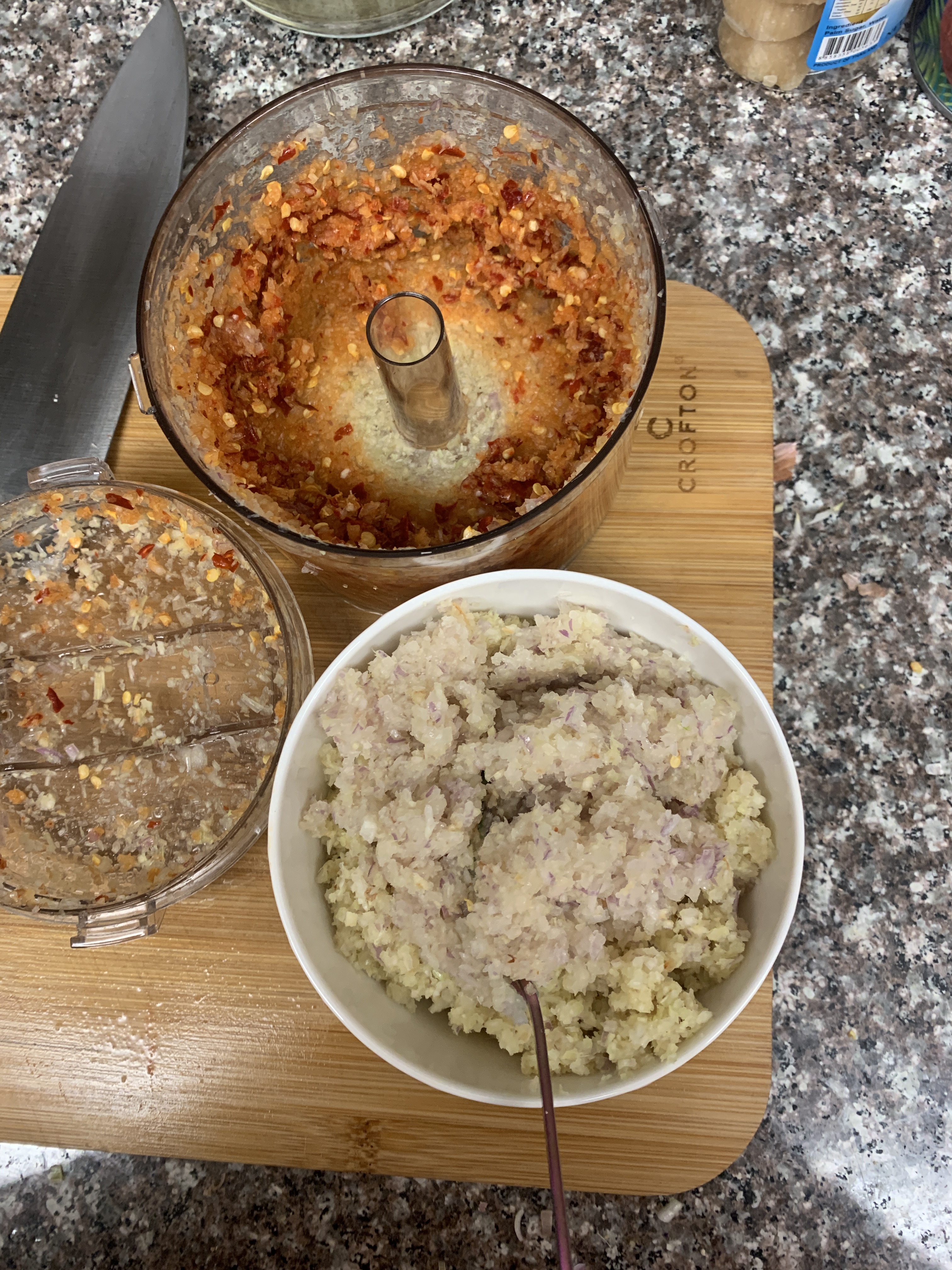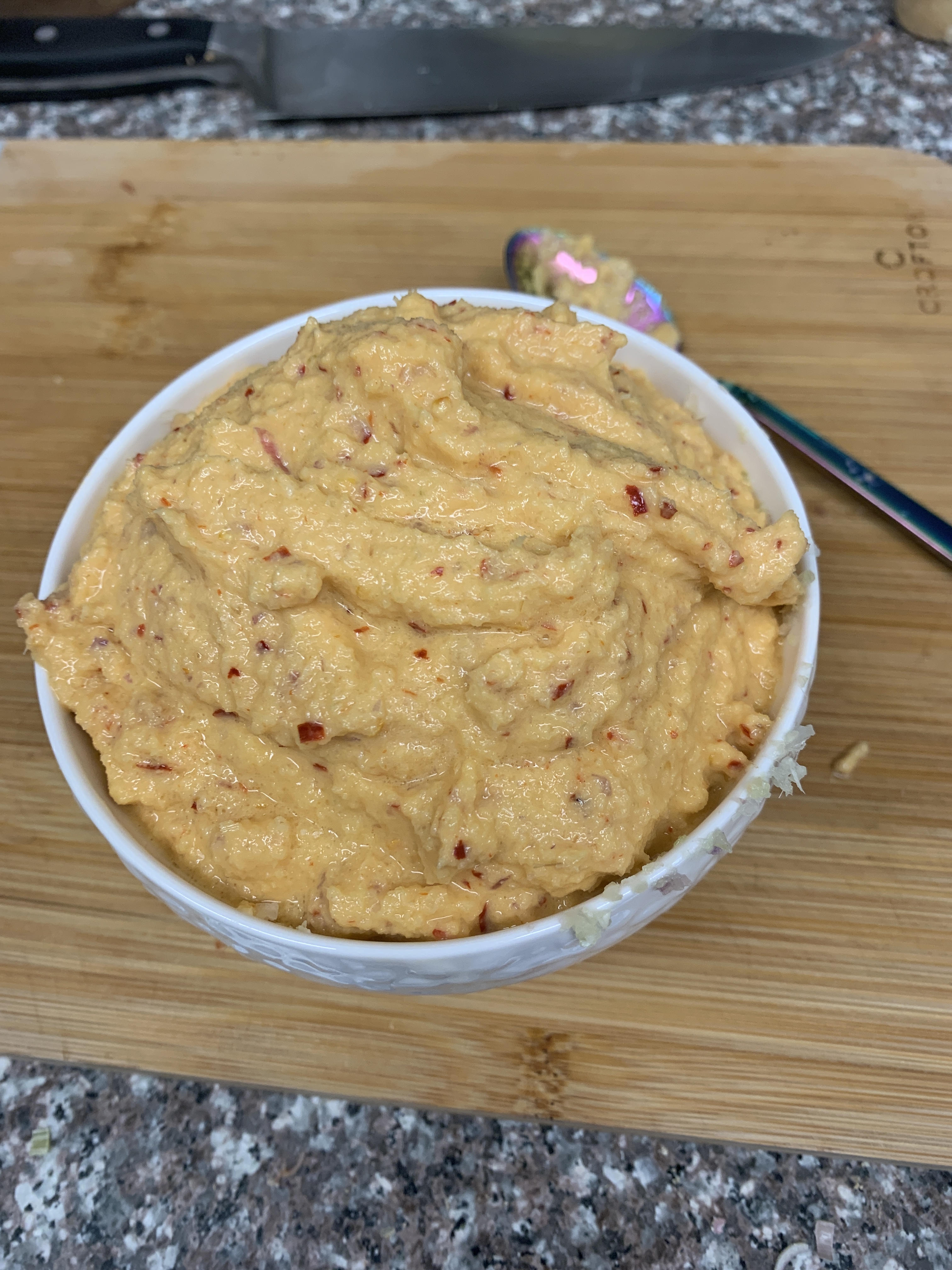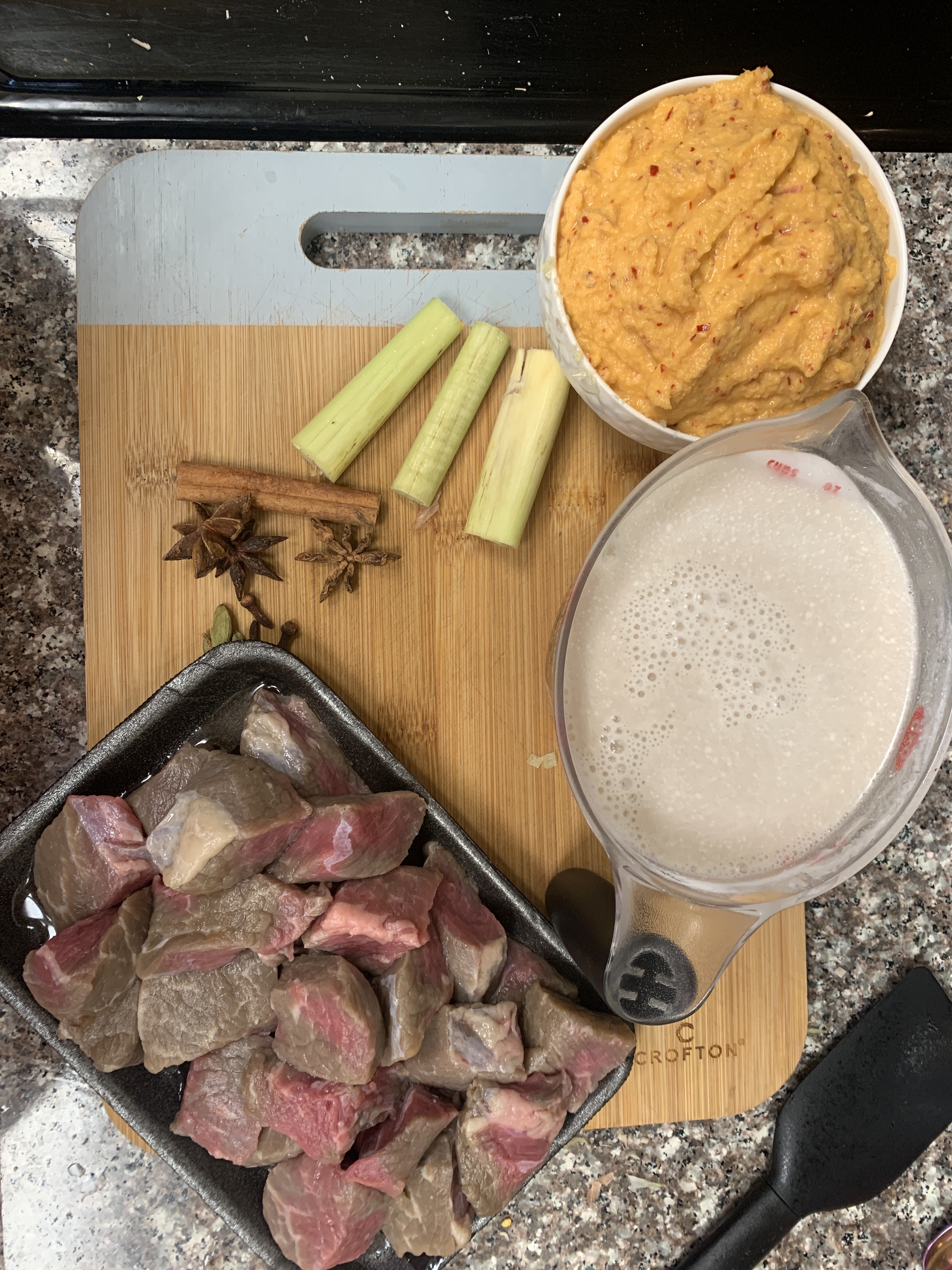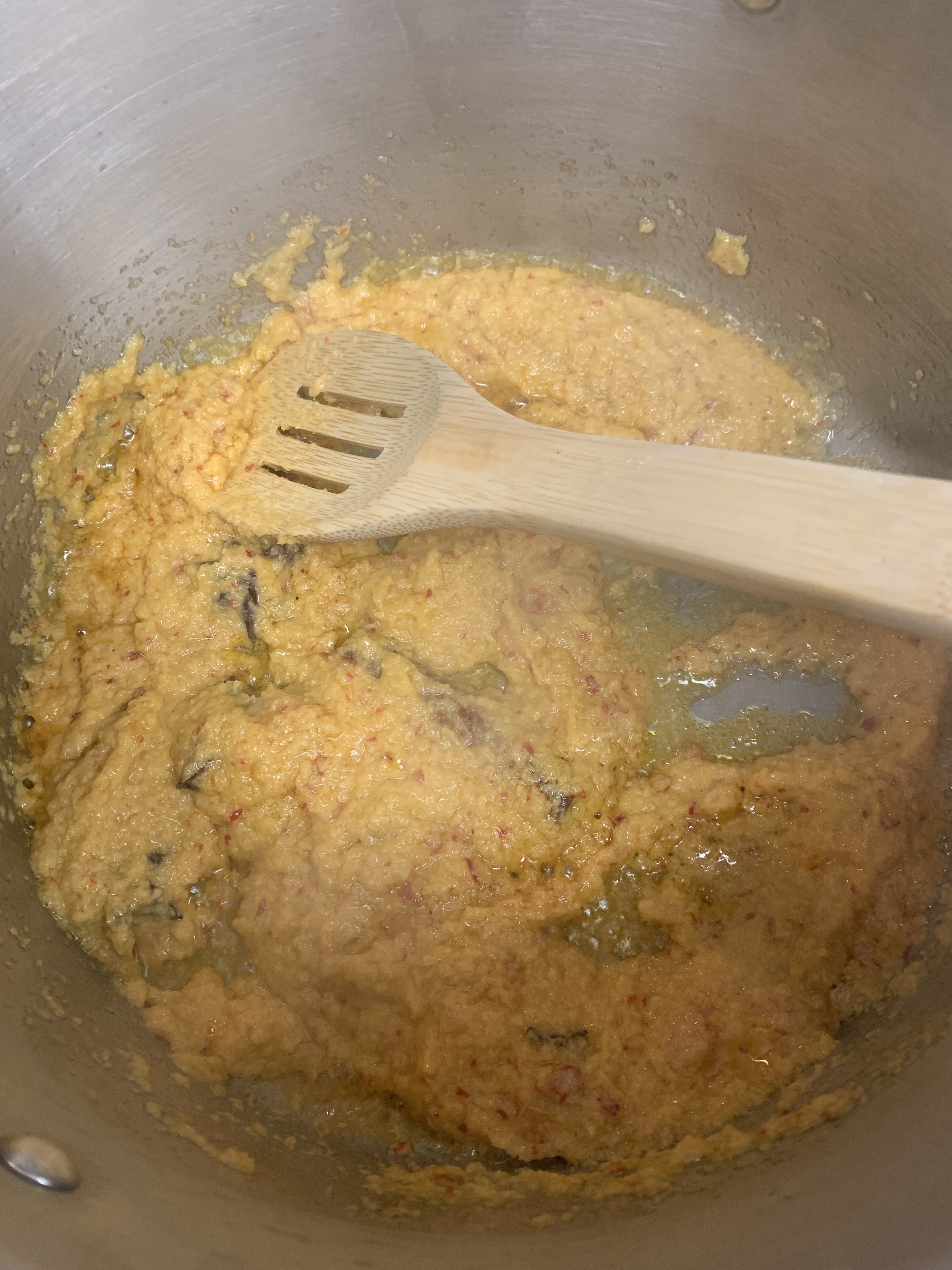Beef Rendang is a quintessential dish to try if you are into Southeast Asian flavors. A spicy blend of chili, lemongrass, ginger, coconut milk and other great warm spices stewed with beef (or your other favorite protein!) until it’s fall apart tender. How could that be bad?
Click here to skip the story and head to the recipe!
If you’ve travelled through Southeast Asia (SEA for short) or love the flavors from thai/malaysian/indonesian foods, we think you will really enjoy this recipe! Many of the base flavors are the same as the curries you have in Thai foods…lemongrass, ginger, galangal (ginger’s cousin) and coconut but there are some new spices introduced in this dish too that are a little different. These include, cinnamon, clove, star anise and cardamom. These are all great spices that add some nice rounded warmth to the dish.
Of course you know we have to add a little history lesson in, so you can really understand this dish from where it began! Rendang is from Sumatra, Indonesia, which itself has a variety of different people, customs and religions. This helped to play a role in the dish, as it is served at many different occasions, like weddings or at the end of Ramadan. This dish, like many others, travelled across the strait of Malacca into Malaysia and Singapore and became an international favorite quickly thereafter. This is a dish that we’ve had in Indonesia and Malaysia and it’s a great find at many SEA restaurants!
There are a few differences from this recipe that might seem out of place from other recipes that you might read. The biggest difference here is that the meat is not seared first, but actually at the end. In most westernized cooking, you season your meat, then sear it to “seal in” the juices and then braised. The steps for this dish are actually reversed, where you will briase first and sear at the end. All of the liquid is cooked down first, resulting in the fat from the coconut milk becoming the frying oil, and the meat is seared by this fat at the end of the cooking. This allows all of the spices and chilies to infuse into the meat as it tenderizes, so every bite will be deeply flavored.
There are also a few whole spices and lemon grass stalks that are added that add flavor, but are also not fun to crunch down on. If you want, put them in some cheese cloth so you can remove them easily at the end, or just be mindful of them before you serve it.
Now, let’s get to cooking!
Beef Rendang with Coconut Rice
Serves 4
Prep Time- 30 minutes
Cook time- 2 hours
Total time: 2 hours 30 minutes
***Before we start, we want you to know that there are a few ingredients you may not know, or find easily, so we want to review those with you and give you some hints about where to find them or some alternatives if you cant.
Lemongrass: You should be able to find this is most markets, but it will be MUCH cheaper at an Asian store.
Galangal: A cousin of ginger, a more earthy tone than ginger. Asian markets will have it, if not, double up on fresh ginger.
Tamarind: A common ingredient, most likely in your grocers Asian or Hispanic section.
Kaffir Lime leaves: This one is a bit more tricky, usually at Asian markets, sometimes they make you buy a pound of them for $12, when you need 5 out of the 150 per bag. They do freeze well, but a suitable sub is lime zest, not the same, but close.
Palm Sugar: Asian markets will have this, but a blend of white and brown sugar will work.
Dried Chilies: The Hispanic section will have these, chili de arbol will work. If you go to the Asian market, you can find fresh or dry birds eye. If you would rather not, crushed red pepper will work.
Spice Paste Ingredients:
– 5 Chinese Shallots or 2 Large European Shallots
– 1” Galangal, peeled
– 1” Ginger peeled
– 5 garlic cloves
– 3 lemon grass stalks (only the white part)
– 5-10 dried bird’s eye chilies, remove the seeds if you don’t want it spicy
Rendang Ingredients:
– 2 pounds of stew meat, diced Chuck roast or another cut that you would use for stewing. About 1” cubes
– 4 Tb coconut oil, or other neutral cooking oil
– 1 cinnamon stick
– 1 stalk of lemon grass, (use the back of your knife to beat it up some, you’ll smell the amazing lemony fragrance) cut into 6” pieces, omit the very top parts.
– 4-6 whole cloves or 1/2 tsp ground cloves
– 2-3 star anise (this has a licorice flavor, omit if you hate that)
– 4-6 green cardamom pods
– A few fresh grated of nutmeg or 1/8 tsp ground
– 2 Tb of tamarind liquid
– 1 can full fat coconut milk
– 1 cup or so of water
– 8 kaffir line leaves, very thinly sliced
– 3/4 cup coconut, toasted heavily and ground
– 2 palm sugar discs grated, or 1TB white plus 1 Tb brown sugar mixed
– 1 tsp of salt
– black pepper to taste

Let’s start cooking!
First you will want to make your spice paste, we roughly chopped the ingredients and put them in our mini food prep and blitzed it until it it was smooth. We found that adding some oil (canola or vegetable would be be fine) helps to loosen it up and make it easier. If you have a mortar and pestle, you can use that and be authentic.


*Tip* We make extra paste to have on hand, it can be used with Beef, Chicken, Lamb, or even salted fish!
Normally in “western” cooking, you would sear the meat first before adding the liquids, but in this case it is reversed.
First step is to fry the paste that you made. Fry the paste in a large wide skillet with tall sides (if you don’t have this, a sauce pot will do) with the cooking oil, and the cinnamon, cloves, star anise, cardamom and nutmeg. Fry this over medium heat until the paste starts to become fragrant.
Add in your meat, bruised lemon grass, water and coconut milk, let this come to a simmer, then add in the palm sugar, toasted coconut and kaffir lime leaves, or lime zest.




After the pot comes to a simmer, cover part way with a lid. You want the meat to simmer in the liquid long enough to break down the meat so it is tender, but you also want to reduce the water content of the liquid. The cooking process should take about an hour and a half at a slow simmer to reduce down to the frying stage.


This is important because, as we mentioned above, the meat isn’t seared at the beginning, but at the end instead. When the water evaporates, the fat in the coconut milk will concentrate, and you will be frying the meat by the end of the cooking time in the remaining oil from the coconut milk. You will see the color change from a nice pinkish color, to a sienna and finally to a deep rich brown as the meat is fried in the remaining coconut oil. When it gets to the stage of frying, be attentive, this is where it can start to stick to the bottom, and burn.
Once it gets to this stage, you’re finished!

Serving suggestions:
We served ours over coconut rice, and it is typically served with something refreshing, like slices of cucumbers and a lime to squeeze.
Quick and Easy Coconut Rice:
This is a fast simple recipe that makes just the right amount of rice for this dish!
Ingredients:
– 1 cup of jasmine rice
– 1- 13oz can of light coconut milk
– 4oz water
– 1/2 tsp sea salt
How to make it:
Soak the rice in cool water for 20 minutes, agitate the rice and change the water twice over this time.
In a sauce pot, bring the light coconut milk and water to a boil, stir in the salt.
Drain the rice from its soaking water, and add it into the boiling liquid, give it a gentle stir, cover and reduce the heat to low.
Let this simmer for 20-25 minutes or until the liquid is absorbed.
After the cooking time, remove from the heat and let it rest covered for 10 minutes.
Fluff with a fork and then it is ready to eat!

And that’s it! We hope you enjoy this authentic and delicious dish, please comment and let us know how your cooking went!
What fun I hope you are having with these emails. You guys do food really well. Even if I don’t cook it, what a treat to have you introduce me to many different dishes. Would love to follow you around the world again, if you get the chance. Thank you.
LikeLiked by 1 person
Thank you so much! We are having fun recreating our favorite dishes from our travels and hoping we can travel again soon. Thank you for always reading and following us!
LikeLike
Thanks for the recipes. I am going to make the coconut rice for sure.
LikeLike